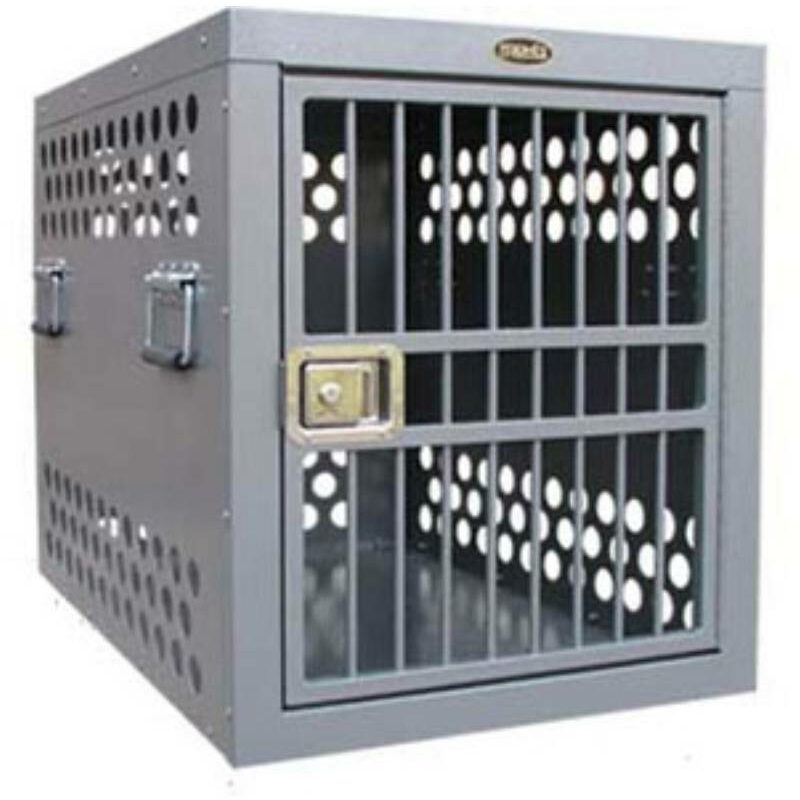The Importance of Crate Training a Puppy
Crate training is a safe and effective way to teach puppies good habits. A crate looks like a den, which is where puppies are raised. It helps prevent problems like chewing, getting into the trash, and going to the bathroom in the wrong places. By giving your puppy a secure space, crate training offers many benefits. This can lead to a well-behaved and happy dog.
Understanding the Crate Size and Placement
The size of the crate is an important factor in crate training a puppy. The puppy only needs enough room in the crate to be able to stand up, turn around, and lie down. Anything bigger can send confusing signals about where to go. So, when crate training, it is important to block off extra space. This helps until the puppy grows into it.
Puppies are social animals, and keeping the crate where they can see you helps reassure them, keep them calm, and gives them a sense of security that only small spaces can provide. Having the crate in a central location within your home, such as the living room or kitchen, allows your puppy to feel included in the family activities while they acclimate to their new environment.
Where should you have the crate? Having a crate in the bedroom at night is particularly beneficial, especially when you can hear the puppy become restless—a big signal that it is time to go outside for potty. When crate training, never let your puppy out of the kennel when it is making noise. Allow it to calm down and be quiet before you close the door. This teaches your puppy that calm behavior leads to freedom, while noise and anxiety do not result in immediate rewards.
Establishing a Routine
Generally, the length of time a puppy should be in a crate at any one time is as many hours as they are in months. A two-month-old puppy should be taken out every two hours, while a three-month-old puppy can wait three hours, and so on. Toward the end of three months, the puppy will likely be able to stay in the kennel overnight, provided the last thing it did before going into the kennel was go outside to relieve itself. Establishing a consistent routine around crate training can help reinforce good habits and make the process smoother.
When you begin crate training, start by introducing the puppy to the kennel at home. Try to make it a pleasant experience. Begin with short time periods and gradually increase the duration as your puppy becomes more comfortable. Use positive reinforcement, such as treats and praise, to encourage your puppy to enter the crate willingly. Remember to repeat a key word, such as “Kennel” or “Crate,” so the puppy will become familiar with this command.
Managing the Time Periods
As you begin to extend the time periods of crate training a puppy, it’s essential to monitor their behavior closely. If your puppy shows signs of distress, such as excessive barking or attempts to escape, it may be a sign that they need more time to adjust. You can also incorporate short periods of time where you leave the room while your puppy is in the crate to help them become accustomed to being alone. Start with just a few minutes and gradually increase this time.
If you must leave your puppy in the kennel for longer periods and will not be available to take it outside to go potty, consider leaving the door open so the puppy can come out into a confined space, like the kitchen, where it can eliminate safely. This approach allows your puppy some freedom while still keeping them safe and contained.
Addressing Common Challenges During Crate Training
While crate training a puppy can yield fantastic results, it’s not without its challenges. One of the most common issues owners face is separation anxiety. If your puppy becomes overly distressed when crated, it’s essential to take a step back and reassess your approach. Gradually increasing the duration they spend in the crate, starting with very short periods, can help them learn that being crated is not a punishment and that you will always return.
If your puppy is barking or whining while in the crate, it’s essential to remain calm and not give in to their demands immediately. Acknowledging their vocalizations can reinforce the behavior. Instead, wait until they are quiet before you open the door. This teaches your puppy that calm behavior is what earns them freedom.
The Long-Term Benefits of Crate Training
The long-term benefits of crate training a puppy extend far beyond just having a safe space for them. A well-crated puppy is less likely to develop destructive behaviors, as they learn to associate their crate with a place of rest and security. Crate training also facilitates easier travel and vet visits. A dog that is accustomed to being in a crate will adapt more quickly to being transported, whether it’s a short trip to the vet or a longer journey.
To finish off, crate training a puppy is an invaluable tool for establishing good habits, providing safety, and fostering a strong bond between you and your companion. By understanding the key components of crate training, including the importance of size, placement, and gradual acclimation, you can create a positive experience that benefits both you and your puppy.

